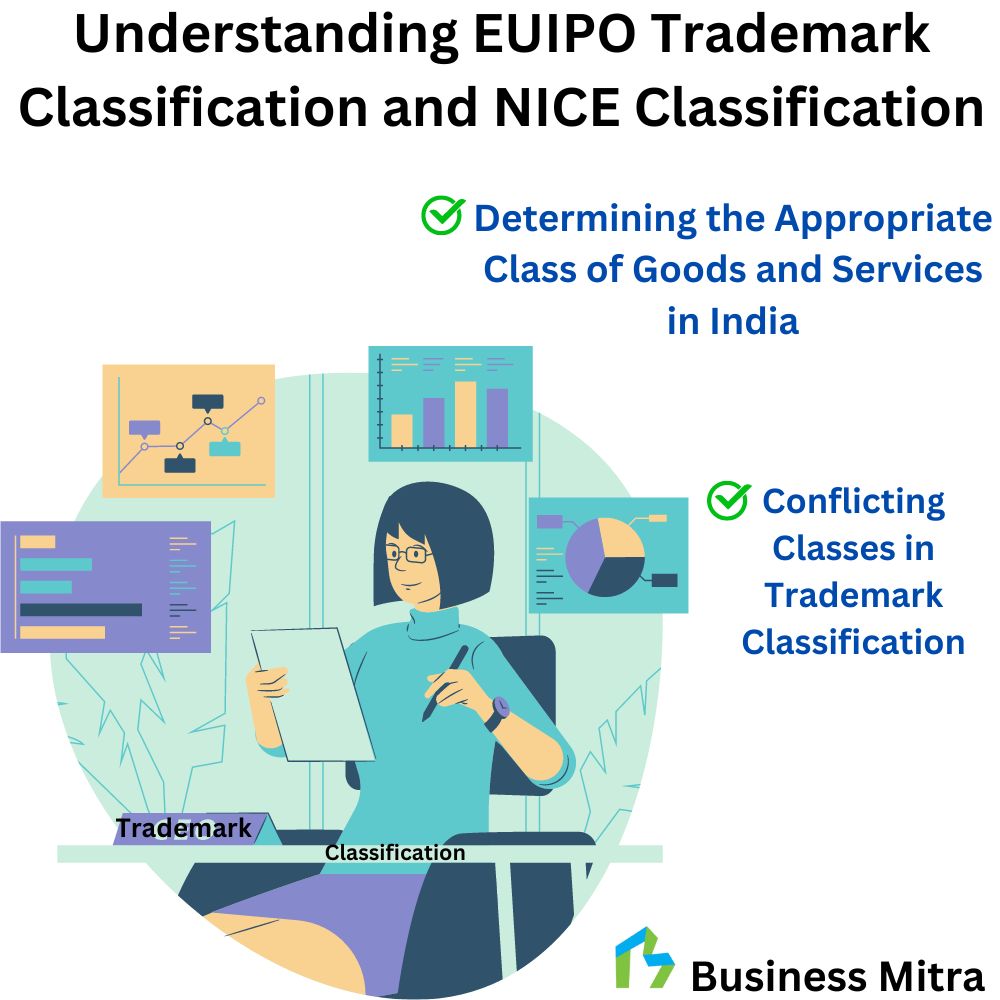
Understanding EUIPO Trademark Classification and NICE Classification
Understanding EUIPO Trademark Classification and NICE Classification
Trademark classification is an essential part of the trademark registration process. Both the European Union Intellectual Property Office (EUIPO) and India rely on the Nice Classification system, an internationally recognized system that categorizes goods and services into 45 different classes. This blog will explore the nuances of the EUIPO and NICE classifications in the context of Indian trademark law, with a focus on determining the appropriate class of goods and services for trademark applications in India.
What is the NICE Classification?
The **NICE Classification**, established by the Nice Agreement in 1957, is a system used to classify goods and services for trademark registration. It contains 45 classes: 34 classes for goods (1-34) and 11 classes for services (35-45). This system is widely used across jurisdictions, including the **EUIPO** and **India**.
Trademark Classification in India
In India, trademarks are registered under the **Trademarks Act, 1999**, and the classification system followed is identical to the **NICE Classification**. Applicants must carefully choose the right class (or classes) when registering their trademark, as this determines the scope of protection.Determining the Appropriate Class of Goods and Services in India
The determination of the appropriate class requires an understanding of the goods and services associated with a trademark. Incorrect classification can lead to objections or even rejection. Below, we’ll look at examples of goods and services classified under different classes and discuss the complexities of determining the appropriate class.
Examples of Goods and Services Falling in Different Classes
Here are 30 examples of goods and services spread across different trademark classes:
1. Class 1: Chemicals for use in industry.
2. Class 2: Paints, varnishes, lacquers.
3. Class 3: Cosmetics and cleaning products.
4. Class 4: Industrial oils and greases.
5. Class 5: Pharmaceuticals and medical preparations.
6. Class 6: Metal building materials.
7. Class 7: Machines and machine tools.
8. Class 8: Hand tools.
9. Class 9: Computer hardware and software products.
10. Class 10: Medical devices.
11. Class 11: Lighting, heating, and cooking appliances.
12. Class 12: Vehicles and conveyances.
13. Class 13: Firearms.
14. Class 14: Jewelry, watches.
15. Class 15: Musical instruments.
16. Class 16: Paper goods and printed materials.
17. Class 17: Rubber and plastics in extruded form.
18. Class 18: Leather goods.
19. Class 19: Building materials.
20. Class 20: Furniture.
21. Class 21: Household utensils and containers.
22. Class 22: Ropes and textiles.
23. Class 23: Yarns and threads.
24. Class 24: Fabrics and textile goods.
25. Class 25: Clothing, footwear, headgear.
26. Class 26: Lace, embroidery, ribbons, and braids.
27. Class 27: Carpets, rugs, mats.
28. Class 28: Games, toys, and playthings.
29. Class 29: Meat, fish, poultry, and eggs.
30. Class 30: Coffee, tea, cocoa, and sugar.
Conflicting Classes in Trademark Classification
Some goods and services may overlap across different classes, leading to conflicts. It's essential to understand how similar items can fall into different classes depending on their nature and purpose. Let's examine some examples of conflicting classes.
Software Products vs. Software Services
**Class 9**: Software as a product (e.g., packaged software, downloadable software). - **Class 42**: Software development services and Software as a Service (SaaS).
In this case, while a trademark for software sold as a product would fall under Class 9, a trademark for software development services or SaaS offerings would fall under Class 42. This distinction is critical, especially for businesses offering a combination of products and services.
Medicines vs. Medical Services
**Class 5**: Medicines and pharmaceutical products. - **Class 44**: Medical services, including hospitals and clinics.
The pharmaceutical industry often requires trademarks for both their products and the services provided. Medicines are classified under Class 5, while the actual medical services are under Class 44.
Other Conflicting Classes Examples
**Class 35**: Retail services, including online retail stores, whereas goods sold in these stores may fall into various product classes. –
**Class 16**: Printed publications like books and magazines, but **Class 41** applies to the services of providing online publications or digital content.
**Class 1**: Chemical products, whereas **Class 5** applies to chemical products used in medical or pharmaceutical industries.
**Class 9**: Consumer electronics like smartwatches, whereas **Class 14** applies to watches and jewelry.
Practical Tips for Determining the Right Class
When filing a trademark application in India or the EU, businesses must be vigilant in choosing the right class for their goods or services.
Here are a few practical tips:
1. **Read the Class Descriptions Thoroughly**: Class descriptions provided by the NICE Classification or Indian Trademark Office help clarify the appropriate class.
2. **Consider the Nature and Purpose**: Think about how the product or service will be used. For example, a downloadable software would go under Class 9, while cloud-based software solutions are in Class 42.
3. **Consult a Trademark Attorney**: For businesses dealing with multiple product lines or services, it's advisable to consult a trademark attorney to ensure proper classification.
Conclusion
Navigating the EUIPO, NICE, and Indian Trademark Classification systems requires careful attention to detail, particularly when similar goods and services fall under conflicting classes. By choosing the right class, businesses can ensure that their trademarks are properly protected, thereby avoiding future conflicts or rejections.
